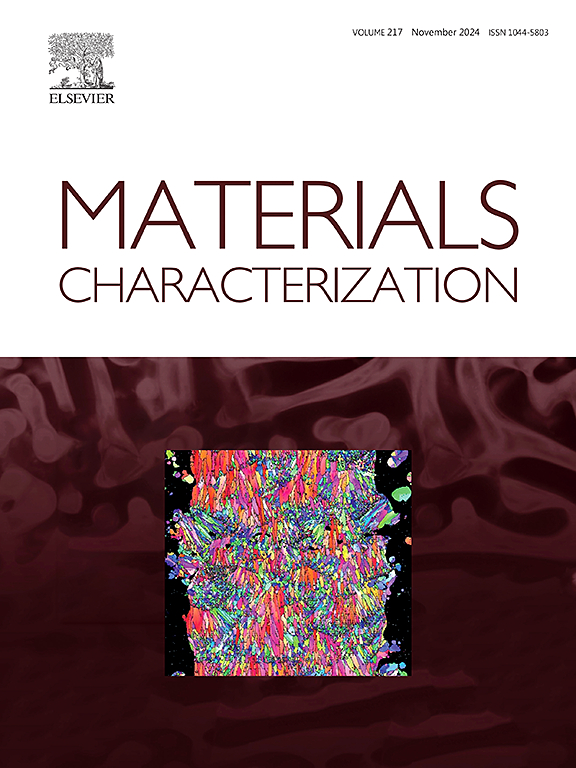Effect of surface nanocrystallization pretreatment on the microstructure and fretting wear of Ti-6Al-4V titanium alloy plasma nitrided layer
IF 4.8
2区 材料科学
Q1 MATERIALS SCIENCE, CHARACTERIZATION & TESTING
引用次数: 0
Abstract
Titanium alloys are widely used in aerospace and biomedical fields due to their excellent strength-to-weight ratio, yet their poor surface wear resistance remains a critical limitation. While plasma nitriding (PN) has proven effective in enhancing surface hardness of Ti-6Al-4V, conventional PN-treated specimens still exhibit insufficient nitride layer thickness and inadequate hardness gradients under severe fretting conditions. The potential of surface nanocrystallization (SNC) as an innovative pretreatment to synergistically enhance nitriding efficiency and wear resistance has not been systematically investigated. This paper employs shot peening (SP) technology to achieve SNC on Ti-6Al-4V titanium alloy and examines its impact on the microstructural characteristics and fretting wear performance of plasma nitrided layers. The results show that, compared to PN samples without SNC treatment, SNC-pretreated PN samples exhibit a 27 % increase in nitrided layer thickness, reaching 4.123 μm, a 26 % enhancement in nano-hardness, reaching 13.02 GPa, and smaller TiN nanograin sizes. SNC-treated PN samples penetrate the nitrided layer at a 50 N load, whereas untreated PN samples reach the substrate at a 30 N load. Additionally, SNC-treated PN samples demonstrate lower wear scar depth and wear rates across all loads. The enhanced wear resistance of the nitrided layer with SNC is primarily due to the increased thickness of the nitrided layer and the hardness enhancement from the reduced TiN grain size.
求助全文
约1分钟内获得全文
求助全文
来源期刊

Materials Characterization
工程技术-材料科学:表征与测试
CiteScore
7.60
自引率
8.50%
发文量
746
审稿时长
36 days
期刊介绍:
Materials Characterization features original articles and state-of-the-art reviews on theoretical and practical aspects of the structure and behaviour of materials.
The Journal focuses on all characterization techniques, including all forms of microscopy (light, electron, acoustic, etc.,) and analysis (especially microanalysis and surface analytical techniques). Developments in both this wide range of techniques and their application to the quantification of the microstructure of materials are essential facets of the Journal.
The Journal provides the Materials Scientist/Engineer with up-to-date information on many types of materials with an underlying theme of explaining the behavior of materials using novel approaches. Materials covered by the journal include:
Metals & Alloys
Ceramics
Nanomaterials
Biomedical materials
Optical materials
Composites
Natural Materials.
 求助内容:
求助内容: 应助结果提醒方式:
应助结果提醒方式:


